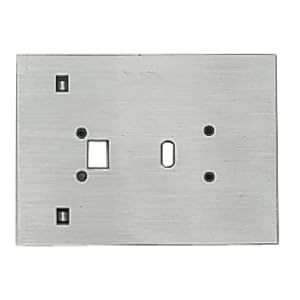Joining Pieces Together
When starting on the actual construction of a piece of furniture, the first question the home craftsman should ask himself is, "What is the best way to join the pieces together?" There are many types of joints commonly used in woodworking - some are easy to make, other are not so easy. The ones you decide to use in joining a particular project should depend upon the strength the piece requires, the appearance you wish to achieve, and the work you are willing to do. Don't make joints more complicated than necessary, but be sure they are strong enough to do the Job.
When cutting a joint, work carefully to insure a firm, square fit. Always make the cut with the enTire saw-kerfs on the waste side of the cutting line. Use a sharp saw. A backsaw, which has a stiffly-reinforced blade and fine teeth, is best for cutting joints by hand. Jigs and clamps are always helpful for accurate sawing, particularly when making several similar joints.
Unless you plan to disassemble the joint for some reason, always use glue to give it added strength. Don't exclude the use of nails, screws, bolts, and other Fasteners.
Lap Joints
Used mainly for joining rails, the lap joint is commonly found joining the table and chAir legs and supports. The two main types are the half-lap and the cross-lap. To make a lap joint, mark the width of each board where it is to be joined, and use a saw to cut (on the inside of the lines) to half the thickness of each (or half the thickness of the thinnest board if you're using two different thicknesses). Cut or chisel out the waste wood.
Mortise-and-Tenon Joints
Like the lap joint, mortise-and-tenon is used primarily for joining rails. But you can also use this type of joint to secure a rail to a surface (such as a piece of plywood). Cut the tenon with a saw. To shape a mortise of matching size, use a router, or drill holes and then chisel out the waste. You might try a mortising attachMent available for drill presses. If the tenon doesn't fit snugly, drive one or two small wooden wedges into the end after joining.
Miter Joints
At a corner where visible end grain is undesirable, a miter is often used. The only tools needed to make simple mite joints are a square for marking compliMentary angles and a saw for cutting the pieces. A miter box is very helpful in guiding a saw to accurately cut angles. Splines or dowels can be inserted in a miter joint to give it strength.
Dado and Rabbet Cuts
The rabbet and dado are commonly used in furniture building - especially for joining cabinet sides, tops, and shelves. Both cuts are easily made with a router or dado-blade assembly on a power saw. You can also make the cuts with a handsaw. To cut a dado by hand, make several cuts in the area to be removed, and chisel out the waste wood.
Using Dowels
Dowels can be used to strengthen almost any type of joint. The ordinary, basic butt joint can be quite strong if dowels are added. To keep holes aligned when making a dowel joint, use dowel pins or a square to mark, and a doweling-jig to drill the holes. If you don't have a doweling-jig, drive two small tacks into end of rails, snip heads off tacks, line up the boards to be joined, and tap them together. When you remove the tacks, two small holes on each piece will show you where to drill. Score dowels spirally with the corner of a file to permit excess glue to escape when you insert them. If they are difficult to insert, try rounding the ends.
Plywood Joints
Plywood is joined using the miter, butt, rabbet, or dado. Butt joints are practical only when using frame construction or 3/4-inch plywood. If you use thinner plywood, a reinforcing block or nailing strip will make a stronger joint.

No comments:
Post a Comment